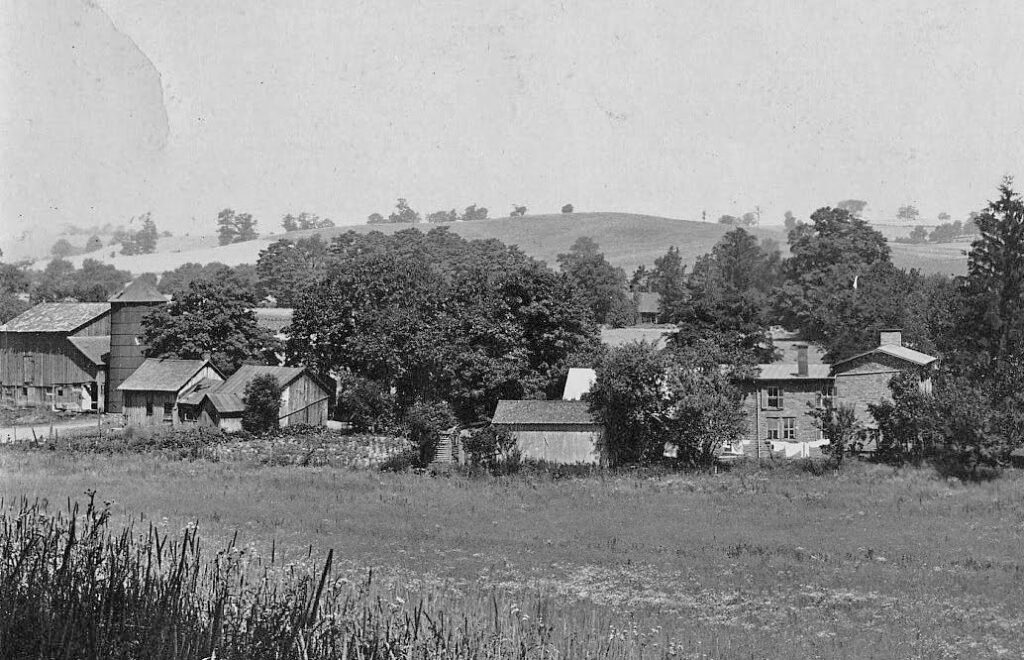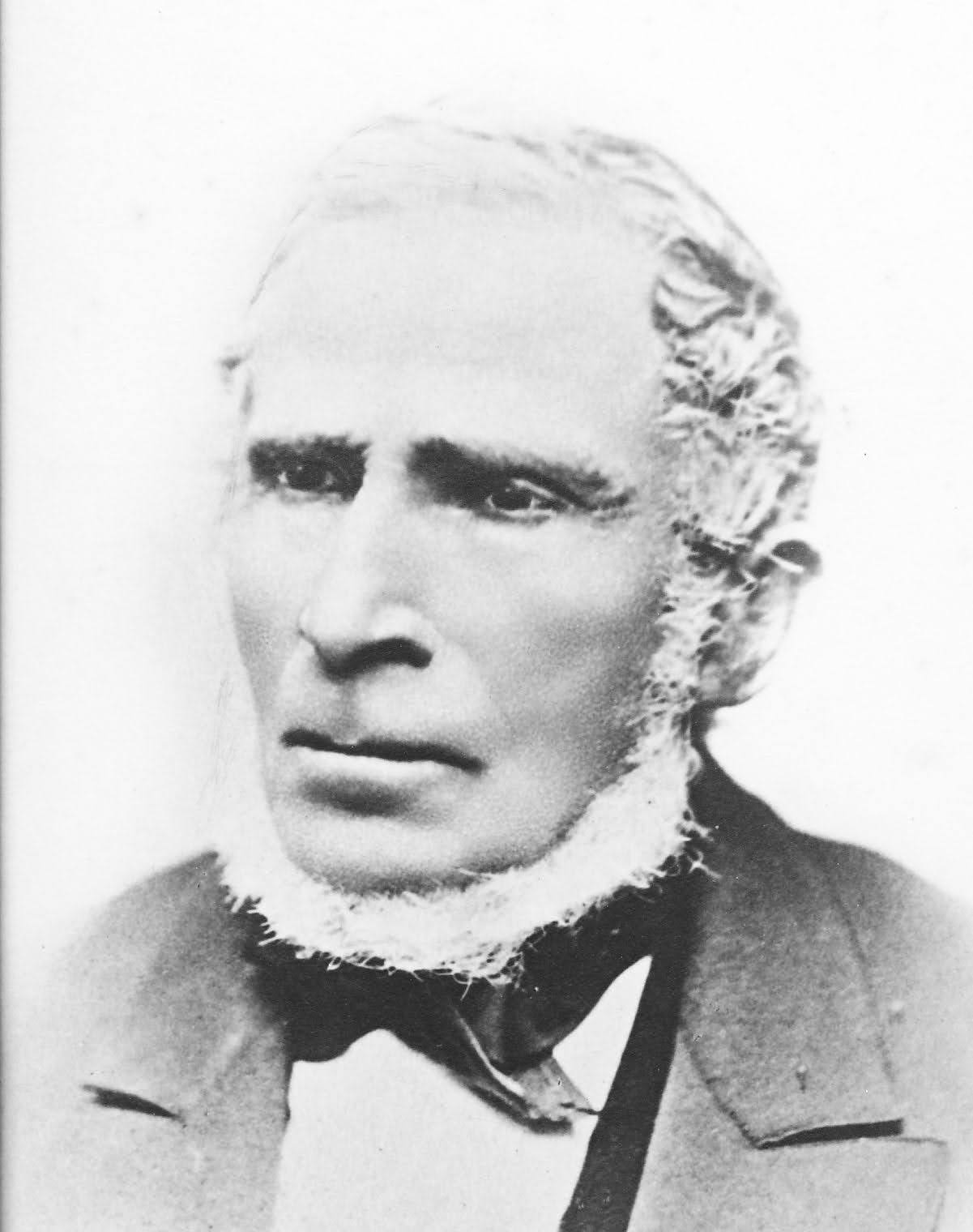A group of young men, many of them enrolled at Granville College, accompanied students and teachers from the Granville Female Academy on their walk back home at around 2 o’clock on a Thursday afternoon in 1836. After heading northbound down Pearl Street, the group took a left at the Broadway intersection, as the women’s boarding house was near Cherry Street.
As they made that left turn, disaster struck.
Fueled by liquor, rioters shoved, shouted and even pelted eggs at them.
The group carried on toward home, but the conflict reached a climax when they hit the Main Street intersection. One of the rioters pushed a man and a woman into a ditch. The man responded by punching the rioter, igniting an all-out brawl that included not only more punches but also stone-throwing.
Eventually, the women reached their home, but not until damage had been done to property and a number of people.
The scuffle, known as “The Granville Riot,” is one of the most recognized events in the town’s history.
But a fight’s a fight. As it pertains to driving change in the community, the event that preceded and prompted the riot is actually much more significant.
James H. Dickey of Bloomingburg kicked off a long-anticipated meeting on April 27, 1836 with a prayer at 10:30 a.m. His words were received by 191 fellow Ohio Anti-Slavery Society delegates packing a barn in Granville for the group’s inaugural convention.
In the 27 ½ hours that followed, the delegates came to resolutions that would propel the anti-slavery movement in Ohio to new heights.
The group met twice on the first day of the convention. Notable resolutions passed on day one include the “Appeal to the Females of Ohio” led by James A. Thome of Oberlin, which expressed the importance of including women in the fight against slavery, and a proposition to call on Congress for the abolishment of slavery and the banning of slave trade in the nation’s capital, which was led by H. Cowles of Oberlin and J.A. Foote of Cleveland.
On the second day of the convention, delegates took steps to ensure the society’s sustainability. They elected officials and set a fundraising goal for the upcoming year.
Four delegates recommended a target of $5,000. After the group discussed the matter, the ante was raised to $10,000.
$4,500 was raised right then and there.
One delegate, Ashley Bancroft, described the scene in an excerpt titled “Recollections of the Bancroft Family.”
“I well recollect seeing tens, twenties, and a few fifties, passing up over the heads of the crowded audience to the stand,” he wrote.
At the conclusion of the second day, the society thanked one particular delegate: Bancroft.
That is because without him, it is unknown whether the Ohio Anti-Slavery Society could have convened in the first place.
The group had been organized a year prior to the convention. Members designated Granville the desired location for a first meeting because it is located in the center of the state and was home for many abolitionists and educated people.
But actually finding a spot in Granville where an anti-slavery convention could be held proved challenging. Many of the abolitionist residents in town feared that conflict between the convention’s attendees and pro-slavery locals would arise. That fear was rooted in recent history. In 1835, rioters pelted eggs at Theodore D. Weld, a noted abolitionist who was visiting Granville for a lecture series, and the year prior, they chucked apples and potatoes at another abolitionist speaker.
Town officials and dozens of residents signed a notice that forbade the use of any Granville building for the convention. Owners of churches and other establishments complied.
In order for the convention to happen in Granville, someone was going to have to go against the grain. But even homeowners across town who supported the anti-slavery movement were reluctant to host the convention.
Except Ashley Bancroft, raised on the ideas of personal sacrifice for a greater good.
See also: “The People of Granville” is my small thank you to this beautiful town
As a child in Granville, Massachusetts, he was trained to work on a farm. On Oct. 3, 1814, at the age of 15, he moved to the village in Ohio — named after his hometown — where his family reconnected with one of Ashley’s uncles, Judge Samuel Bancroft. Judge Samuel had made the westward journey with ox and cattle eight years prior.
A few months after arriving in Granville, Ashley agreed to build a house in Newark for a man named Wm. Stanberry. Stanberry paid him in the form of a farm. In 1834, Ashley built a stone house on the farm, cutting the stone himself.
By chance, abolitionists in town needed a place to host the Anti-Slavery Convention just two years later. Ashley offered up his house and the barn that accompanied it, and he put up a temporary addition in order to accommodate the influx of visitors.
Bancroft was no stranger to supporting abolitionist causes, no matter the risk. He and his wife, Lucy, hosted Weld’s third abolitionist lecture in town a year prior to the convention. The couple’s home was also one of the prominent Underground Railroad stops in Granville. Ashley and Lucy’s son, Hubert Howe Bancroft, recalled driving a wagon with runaway slaves hidden in it.

Come convention day, delegates were braced for the worst. They kept lookout from both sides of the hill overlooking the barn, and an armed guard stood outside of the Bancroft home to detect potential rioters that could be coming from other directions.
Of course, disaster did eventually strike after the second day of meetings. But for the pro-slavery rioters in Granville, hurting some college kids and damaging some property was too little, too late. The Ohio Anti-Slavery Society had already taken progressive steps toward abolishing slavery in the United States, albeit baby steps. But over the coming decades, baby steps taken across the country amounted to a march, and eventually the 13th Amendment passed in 1865.
Good chunks of the Bancroft family property no longer exist. It stretched westward toward what is now the Mitchell Center at Denison University. The house, though, still stands at 555 N. Pearl St. The university still uses it for housing, just as Underground Railroad leader and Ohio Anti-Slavery Society inaugural convention host Ashley Bancroft once did.
Thank you to Theresa Overholser of the Granville Historical Society for her guidance throughout the production of this story, and to Mitchell Snay (author of “Freedom: The Antislavery Movement in Granville”) and Robert Price (author of “The Ohio Anti-slavery Convention of 1836”) for producing research that helped this story come to light.
Jack Nimesheim writes for TheReportingProject.org, the nonprofit news organization of Denison University’s Journalism program, which is supported by generous donations from readers. Sign up for The Reporting Project newsletter here.

